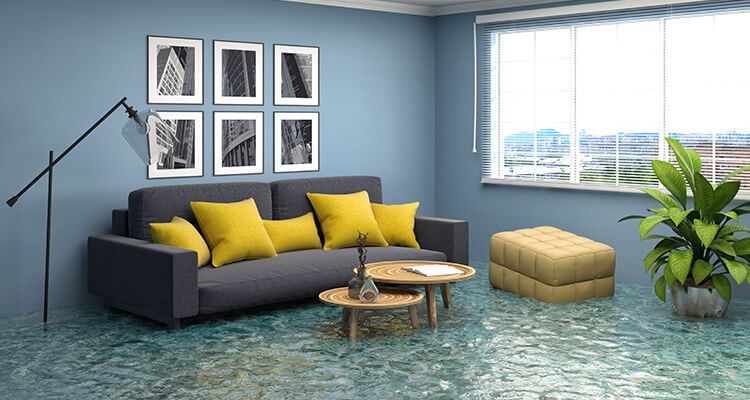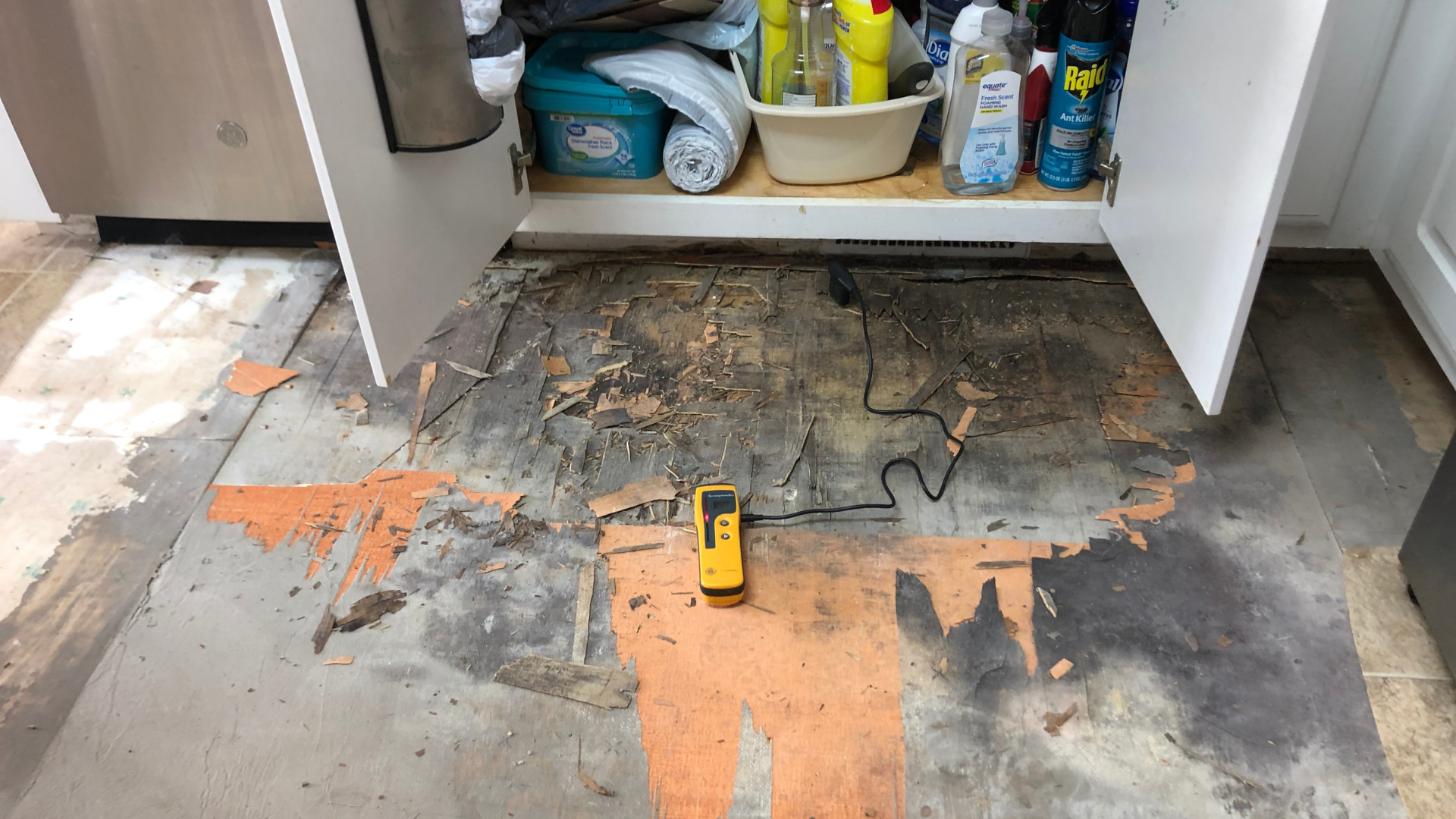Key considerations in water damage restoration execution
Everything About Water Damages Reconstruction: Secret Realities and Advantages You Need To Know
Water damages reconstruction is a critical process that every house owner must understand. It involves examining the sort of damages, whether clean, gray, or black water, and executing a systematic reconstruction method. Recognizing the signs of water damage early can significantly affect the performance of the restoration. Recognizing the steps involved and the relevance of timely activity can avoid further issues. What elements should home owners take into consideration when choosing in between professional services and DIY techniques?
Recognizing Water Damage: Types and Triggers
What factors add to water damage, and exactly how can they be classified? Water damages can be identified right into three major classifications: tidy water, gray water, and black water. Clean water originates from sources like busted pipelines or rain, positioning marginal health risks. Gray water, which may originate from home appliances like dishwashing machines or washing equipments, includes pollutants that need mindful handling. Black water, stemming from sewer or flooding, postures serious health and wellness risks and needs immediate attention.
The sources of water damages vary. Typical factors include plumbing failings, roof leakages, natural catastrophes, and bad water drainage systems. In addition, human errors, such as leaving taps falling short or running to maintain home appliances, can aggravate the problem. Understanding these types and causes is crucial for effective prevention and remediation strategies, making sure that homeowner can take aggressive procedures to guard their homes against the detrimental impacts of water damage.
Signs of Water Damages: How to Recognize Concerns Early
Exactly how can one identify the early indicators of water damages before it escalates into a much more significant issue? Identifying these concerns without delay can save home owners from considerable repair work. Typical indicators include visible water stains on ceilings or wall surfaces, which typically show up as yellow-colored or brown patches. One more indicator is gurgling or peeling off paint and wallpaper, recommending dampness below the surface. Mildewy smells can additionally represent covert mold and mildew development, a straight outcome of prolonged wetness. Furthermore, warping or fastening of floorings may suggest excess dampness in the underlying frameworks. House owners should routinely inspect locations prone to water exposure, such as washrooms, cooking areas, and basements, for any indicators of leak or wetness. An abrupt increase in utility expenses might hint at undetected leaks. By recognizing these very early indications, people can take aggressive measures to deal with water damages before it aggravates.
The Water Damage Restoration Process: Step-by-Step

Next off, the drying out process begins, using air movers and dehumidifiers to get rid of wetness from wall surfaces, floorings, and personal valuables. After the location is extensively dried out, cleansing and sanitization happen to eliminate smells and contaminants.
Lastly, fixings and reconstruction job is carried out, which might consist of changing broken products, painting, or redecorating surfaces. water damage restoration. Throughout the process, documents is preserved for insurance objectives, making specific that all activities taken are videotaped. Each step is crucial to restore the residential property and assure a safe living environment for passengers
Value of Timely Restoration: Why Acting Rapid Issues
Timely repair complying with water damage is crucial, as delays can cause escalating problems such as mold development and architectural deterioration. Water can quickly leak right into porous products, developing a perfect setting for mold and mildew spores to thrive. Within 24-48 hours, mold and mildew can begin to develop, posturing wellness threats and more making complex reconstruction efforts.

Additionally, extended exposure to moisture can deteriorate the structural integrity of structures, causing expensive repair work and prospective safety and security dangers. Acting quickly not only minimizes damages however also minimizes the general expense of reconstruction. Insurance provider commonly favor prompt action, which can promote smoother cases procedures and quicker financial recuperation for property proprietors.
Ultimately, focusing on timely repair protects residential or commercial property value, enhances safety, and advertises a healthier living setting. For these factors, swift action is vital in the after-effects of water damage, highlighting the importance of attending to concerns as quickly as they occur.
Expert vs. DIY Remediation: Cons and pros
When taking into consideration water damage reconstruction, homeowners typically consider the alternatives of specialist solutions versus DIY approaches. Price factors to consider play a significant role, as specialist remediation can be more costly however might offer premium proficiency and specialized equipment. Each choice has its disadvantages and pros, influencing both the efficiency and efficiency of the reconstruction process.
Price Considerations
While property owners may think about both expert services and DIY methods for water damages remediation, each alternative provides distinctive financial implications and benefits. Professional restoration services frequently include higher upfront costs because of know-how, devices, and labor. Nonetheless, they can speed up the reconstruction procedure, possibly reducing additional damage and linked costs. On the other hand, DIY restoration may appear more economical at first, as it normally includes lower direct expenses. Home owners should factor in the potential for blunders, which can lead to more considerable damage and greater long-term expenses. Ultimately, the option in between specialist and DIY restoration rests on the homeowner's spending plan, the seriousness of the damage, and their desire to spend time and effort right into the reconstruction process.
Knowledge and Devices
A significant difference in between specialist and DIY water damages reconstruction exists in the proficiency and tools readily available for every technique. Professionals have specialized training and experience, allowing them to analyze damages properly and implement efficient reconstruction strategies. They make use of innovative devices, such as industrial-grade dehumidifiers and moisture detection tools, which can significantly quicken the drying out process and protect against additional complications like mold growth. In contrast, do it yourself repair commonly relies upon basic home tools and methods, which may be less effective and can result in insufficient fixings. While DIY can save money, it also lugs threats, consisting of potential health and wellness threats and comprehensive damage if not done properly. Inevitably, picking in between professional solutions and do it yourself techniques depends upon the seriousness of the damages and the property owner's capabilities.
Advanced Techniques in Water Damages Remediation
Although water damage restoration has generally relied upon typical approaches, progressed methods are now changing the market. Technologies such as thermal imaging modern technology enable repair professionals to detect concealed dampness behind wall surfaces and under floors, making certain complete drying processes. Furthermore, using high-capacity dehumidifiers increases moisture elimination, greatly minimizing the danger of mold growth.
An additional advancement is the implementation of antimicrobial therapies, which prevent mold and mildew and germs development, securing the health and wellness of owners. Advanced drying out equipment, including air moving companies and specialized drying out mats, boosts air flow and facilitates quicker evaporation of moisture.
Furthermore, real-time monitoring systems now supply continual assessments of dampness degrees, making it possible for prompt interventions and optimizing remediation Get More Information efforts. These innovations not just improve the performance of water damage reconstruction but also contribute to much better end results for buildings, reducing long-lasting damage and discover this info here expenses associated with water-related occurrences.
Protecting Against Future Water Damages: Tips for Homeowners
To avoid future water damages, homeowners ought to embrace positive procedures that address prospective susceptabilities in their residential or commercial properties. Regular upkeep of roof coverings, seamless gutters, and downspouts is essential; ensuring these are clear of debris can prevent water buildup. House owners must likewise inspect plumbing systems for leakages and change damaged pipelines quickly. Mounting sump pumps in cellars can ward off flooding during heavy rains, while using water alarms can offer early discovery of leaks.
Furthermore, sealing doors and home windows helps stop rain intrusion. Landscaping ought to guide water away from the foundation, employing appropriate grading and drain options. Property owners could additionally take into consideration waterproofing cellars and creep rooms to more minimize risks. Ultimately, keeping an updated stock of home items can assist in insurance coverage cases must harm happen. By carrying out these techniques, house owners can meaningfully reduce the possibility of water damage and secure their financial investments.
Regularly Asked Questions
Just How Much Does Water Damage Repair Generally Cost?
Water damage repair generally sets you back in between $1,000 and $5,000, depending upon the level of the damage, the kind of products affected, and the place. Complicated instances might surpass this range substantially, requiring specialist analysis.
Will My Insurance Coverage Cover Water Damage Restoration Costs?
Insurance policy protection for water damages remediation differs by policy and circumstances. Commonly, property owners' insurance coverage may cover problems from abrupt occurrences, but exemptions may apply. It is a good idea to examine the policy details or speak with an insurance coverage agent.
For how long Does the Remediation Process Typically Take?

What Should I Do Instantly After Discovering Water Damages?
Upon discovering water damages, one need to instantly shut off the water resource, remove beneficial things from the afflicted area, and assurance correct air flow. Looking for professional aid is vital for effective damage control my website and reconstruction.
Are There Details Materials That Are Immune to Water Damage?
Particular products, such as treated wood, concrete, and fiberglass, display higher resistance to water damage. In addition, water resistant finishes and artificial fabrics boost resilience, offering reliable security against wetness and possible wear and tear over time.
Water damages can be categorized right into three primary groups: tidy water, gray water, and black water. When thinking about water damage remediation, home owners frequently evaluate the alternatives of professional solutions versus Do it yourself approaches. While homeowners may consider both expert services and DIY approaches for water damage restoration, each choice provides distinctive economic effects and benefits. Water damage restoration usually sets you back in between $1,000 and $5,000, depending on the extent of the damages, the kind of materials impacted, and the place. Upon discovering water damage, one need to promptly turn off the water resource, eliminate valuable items from the affected location, and guarantee appropriate air flow.